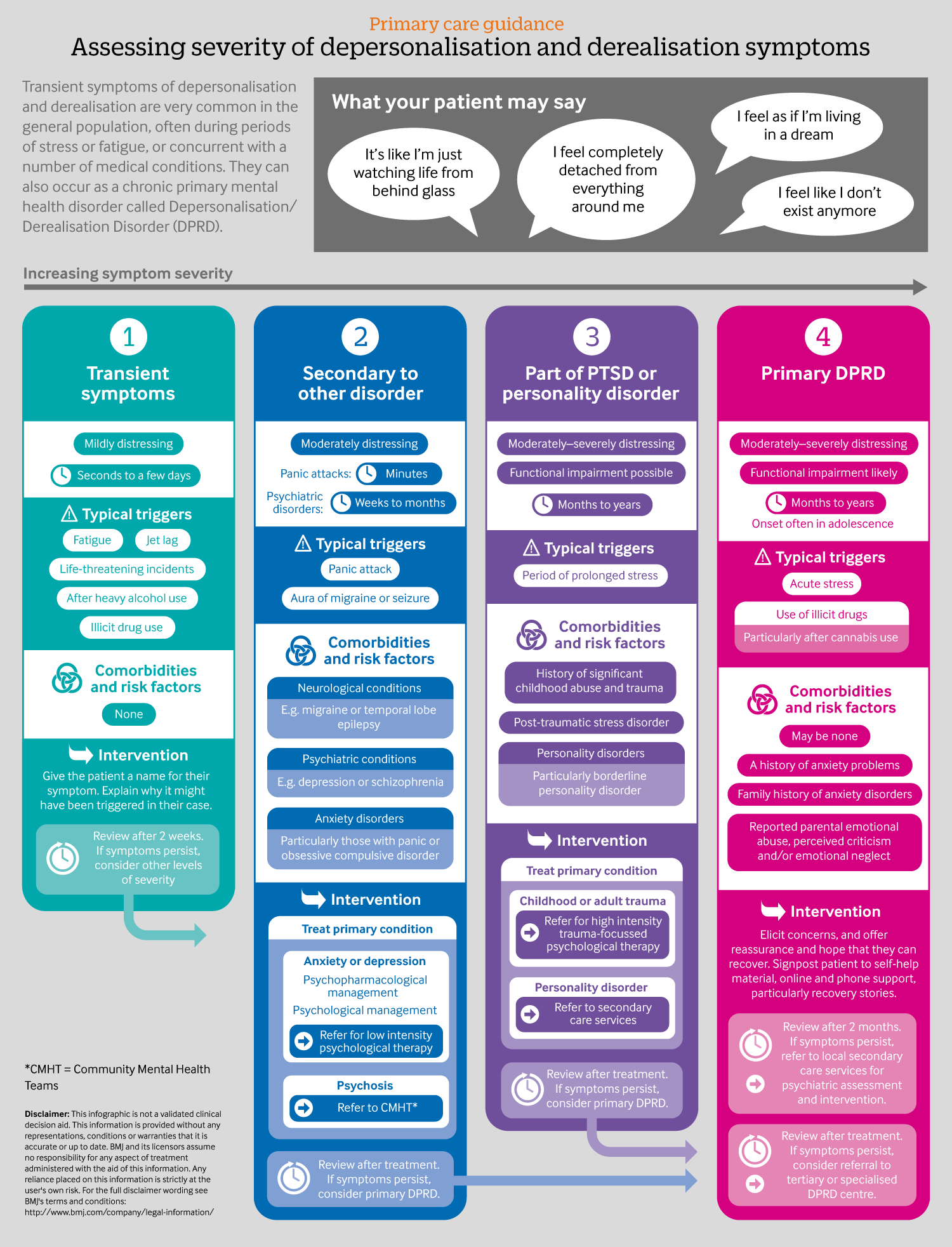

Memories feel like scenes from a movie the patient remembers them with no emotion and may even feel that the memories aren’t there’s.ĭerealization symptoms include but are not limited to:.

Losing or feeling cut off from the five senses (sight, taste, hearing, smell, and touch) that allow humans to interact with the world around them.Limbs or head appear distorted or feel misshapen.Feeling like speech and movements are being controlled by someone else.Experiencing out-of-body feelings as if the patient is “floating in the air above ”.Depersonalization Disorder Symptomsĭepersonalization symptoms include but are not limited to: While it may be common for humans to experience passing moments of dissociation from their surroundings such as daydreams or highway hypnosis, those suffering from a dissociative condition experience dissociative moments for significant periods of time such as hours, days, weeks, or even months. Symptoms of this mental illness normally begin during a patient’s teenage years or early adulthood as the disorder is rare in children or older adults. Symptoms of Depersonalization-Derealization Disorder A patient suffering from the depersonalization– derealization disorder may experience one type of dissociation or both. Having this kind of dissociation for long periods of time can lead to a patient feeling that their surroundings look blurry or time feels distorted. A depersonalization episode defines the side of this disorder where the patient experiences feeling detached from themself, their emotions, their memories, or can be described as feeling like “an outsider to their lives.” A derealization episode defines the side of this disorder where the patient feels detached from the world around them. There are two distinct separations occurring within this disorder, one is depersonalization and one is derealization.

When a patient experiences this detachment, they are aware that it’s not real but commonly find themselves doing reality checks to ensure their existence due to the detachment feeling like a dream. There are three different kinds of dissociative disorders that range in levels of severity: dissociative identity disorder (DID) is considered the most severe, dissociative amnesia is considered to be slightly less severe, and depersonalization-derealization disorder is considered the least severe.ĭepersonalization-derealization disorder is a type of dissociative disorder where the patient experiences out-of-body feelings and emotions about being detached from themself, the world around them, or both. Often times, a traumatic experience such as abuse, an accident, or a disaster can trigger a dissociative disorder in order to help a patient tolerate pain or emotions that are difficult to cope with. This detachment can lead to further issues, causing a patient to struggle with their memory, emotional control, perception, and identity. While most people have experienced some sort of dissociative experience such as a daydream or getting “lost” in a movie or book, those suffering from a dissociative disorder often feel detached from reality for long periods of time.


 0 kommentar(er)
0 kommentar(er)
